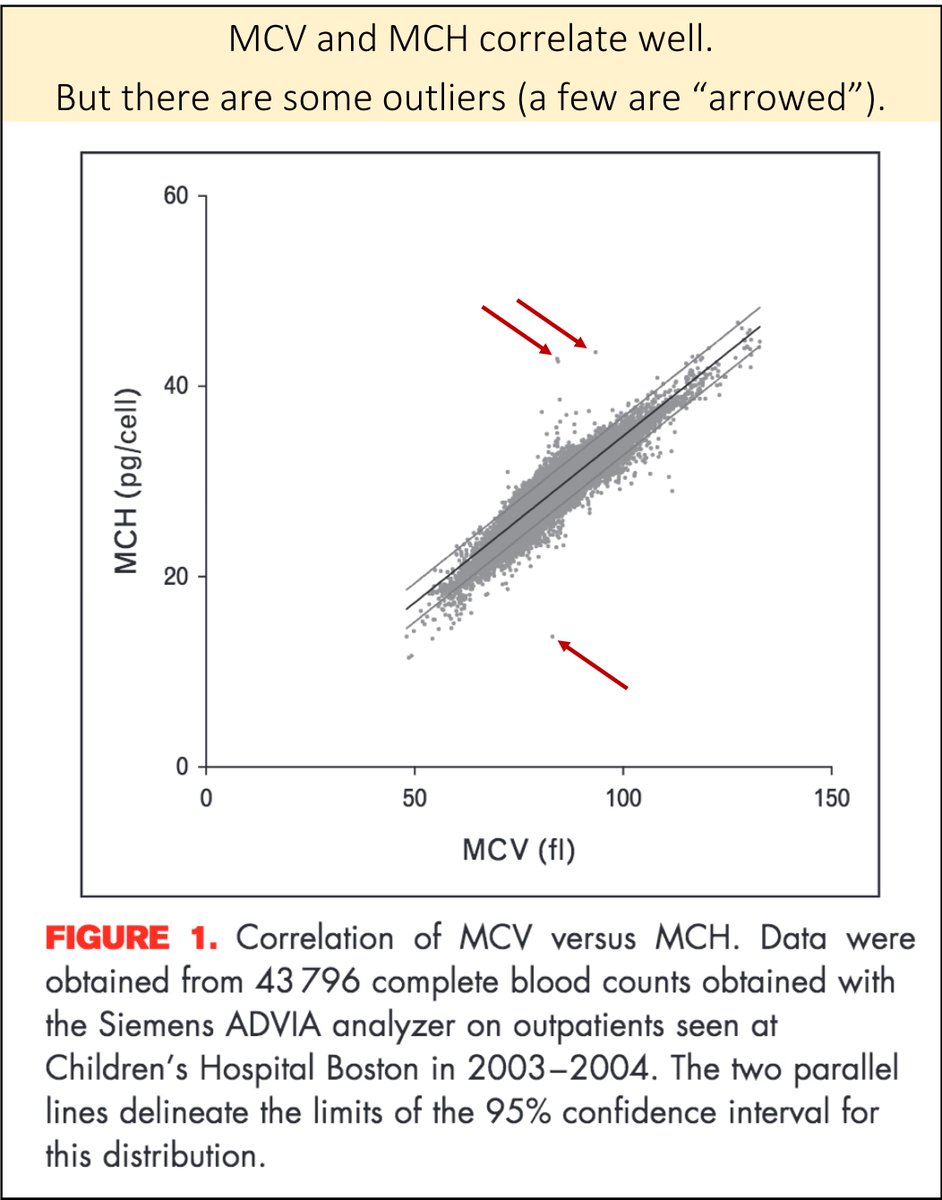Why is too much oxygen (hyperoxia) harmful?
Given how necessary O₂ is for human life, I'd long assumed it served only to help, not harm. But, in my career, there has been a growing realization that supplemental O₂ isn't benign.
So, how might O₂ lead to harm?
Anaerobic life had not yet adapted to O₂. It was so toxic that its appearance may have resulted in one of the largest mass extinctions in Earth history.
ncbi.nlm.nih.gov/pubmed/19640495
books.google.com/books?id=eo_sM…
Eventually, mechanisms evolved to handle O₂ and its toxic free radicals: binding with iron-containing hemoglobin and oxidation to H₂O and CO₂.
A byproduct of the latter reaction: ATP.
And with ATP comes energy and larger organisms. Like us.
ncbi.nlm.nih.gov/pubmed/22804568
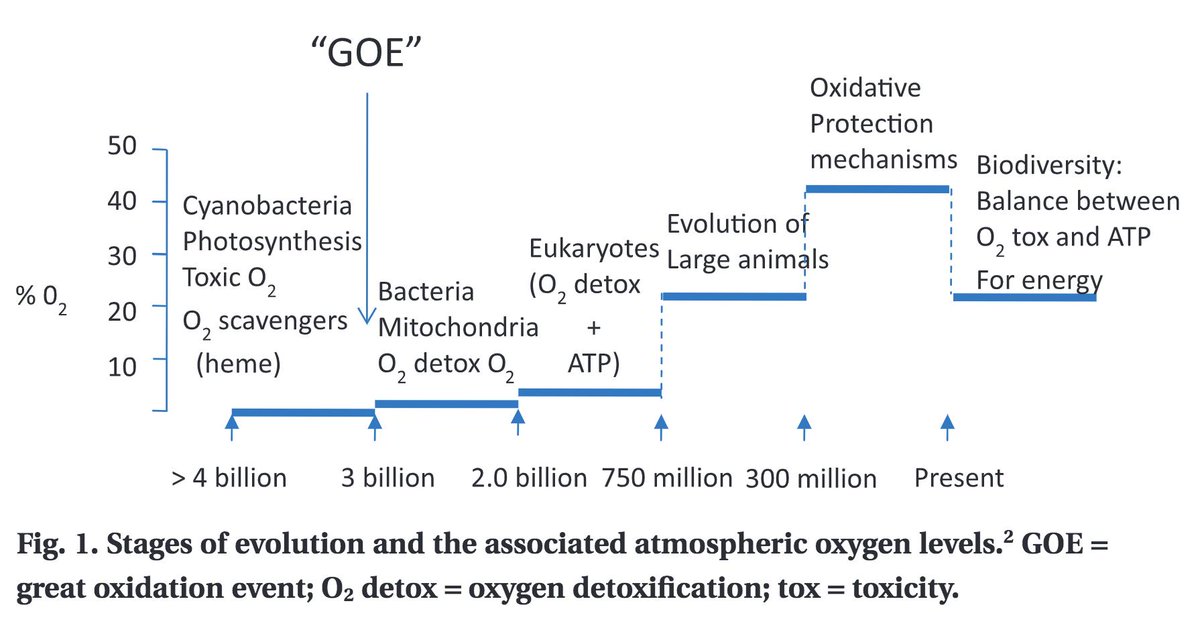
Although eukaryotes evolved to utilize O₂ for energy, it remains toxic. Observations supporting this have been made since the 1800s.
In 1899, James Lorrain Smith reported convulsions and harmful pulmonary effects when giving increased O₂ to animals.
ncbi.nlm.nih.gov/pubmed/16992479

In 1943, Ketty and Schmidt showed that inhalation of 85-100% O₂ reduced cerebral blood flow by 13%.
This was the result of increased vascular resistance, which also led to increased blood pressure.
ncbi.nlm.nih.gov/pmc/articles/P…
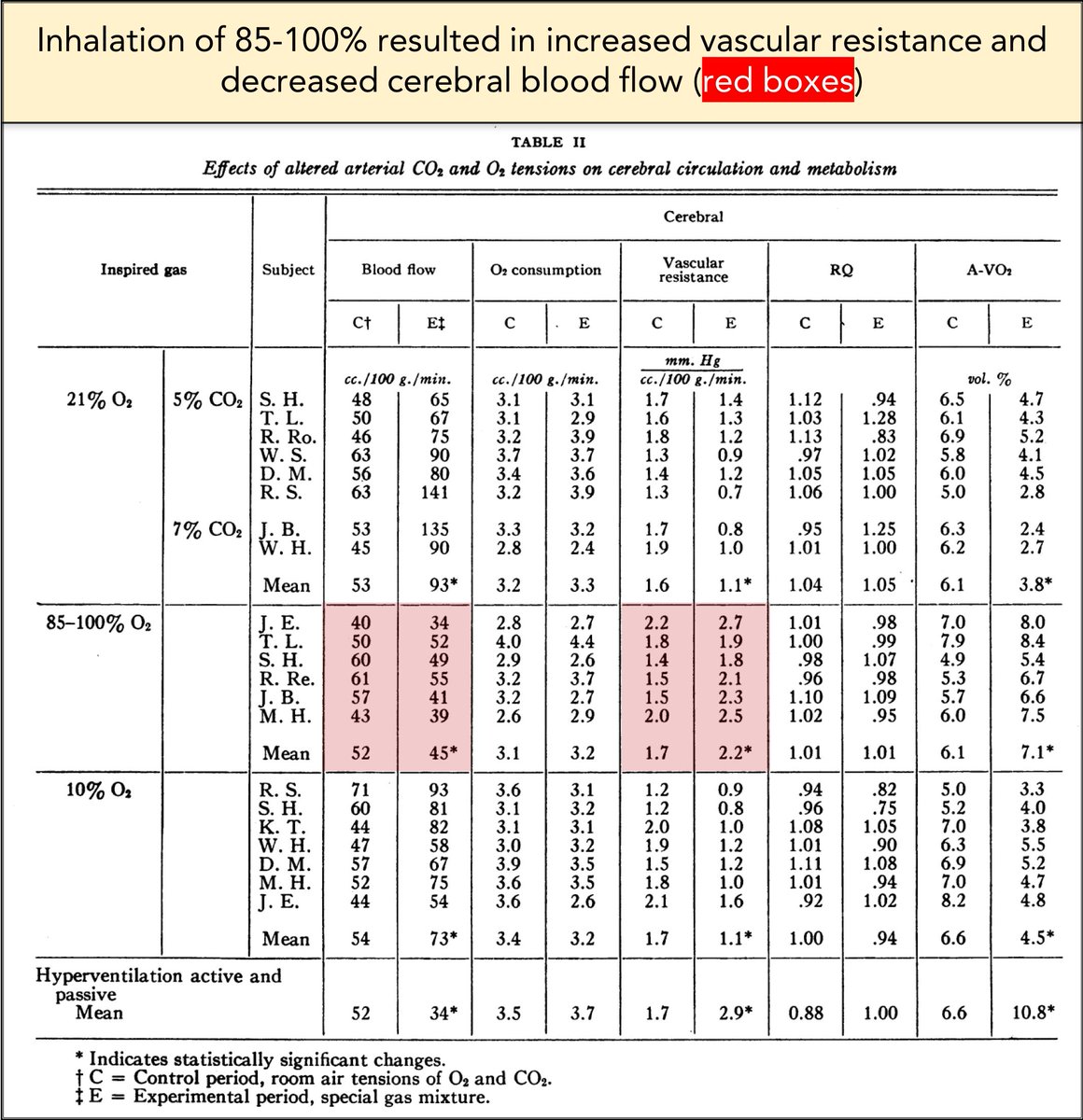
A 2018 systematic review nicely summarizes hemodynamic effects of hyperoxia O₂ across multiple patient types.
The most consistent changes were:
↑ systemic vascular resistance
↓ cardiac output
ncbi.nlm.nih.gov/pubmed/29477145
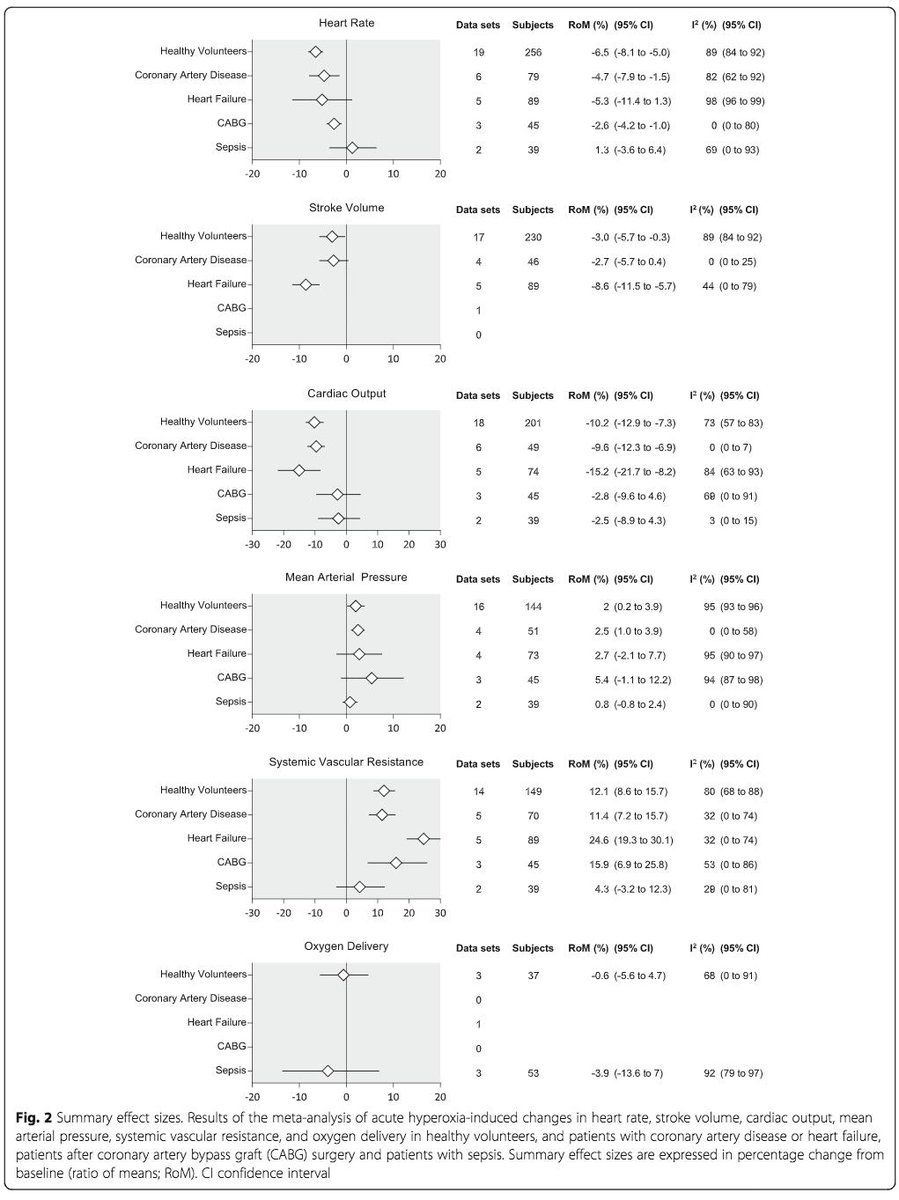
In these studies, O₂ delivery was not increased by hyperoxia.
The result for patients: in most studies, there is no improvement in outcomes for patients receiving increased O₂.
And, in some studies, outcomes were worse (also see tweet 14).
ncbi.nlm.nih.gov/pubmed/26002889
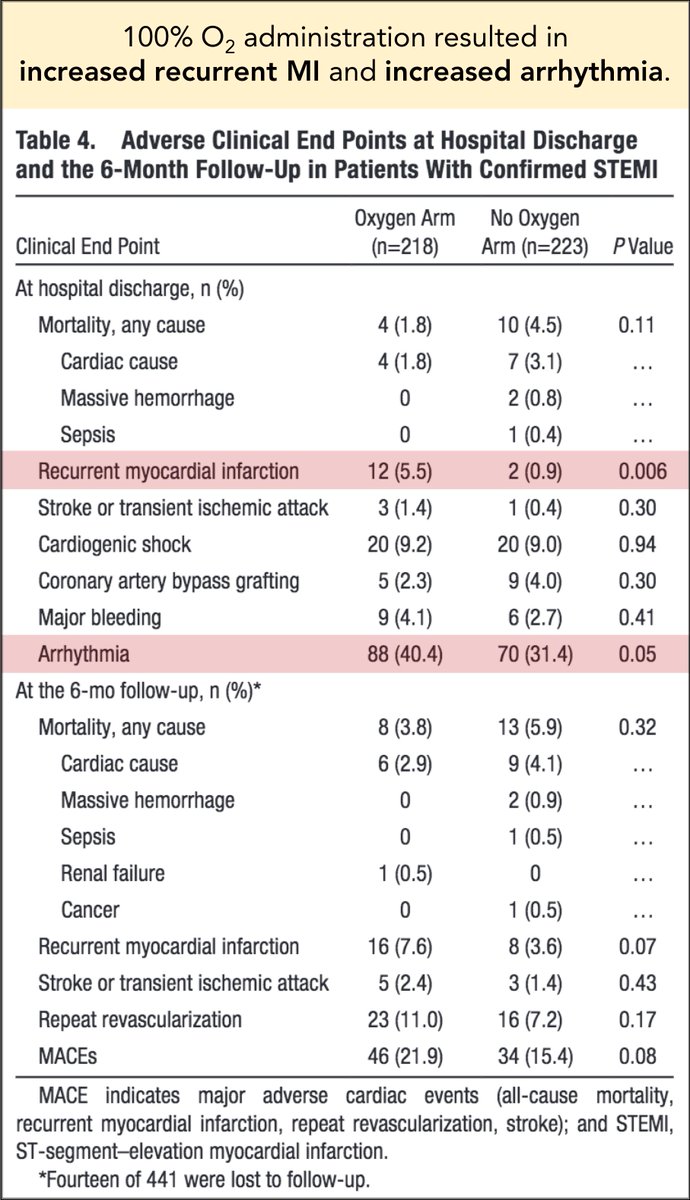
Why does hyperoxia cause vasoconstriction? One mechanism may be the reduction in endothelium-derived nitric oxide (NO).
Given that NO is a vasodilator, its reduction leads to vasoconstriction.
ncbi.nlm.nih.gov/pubmed/3010744
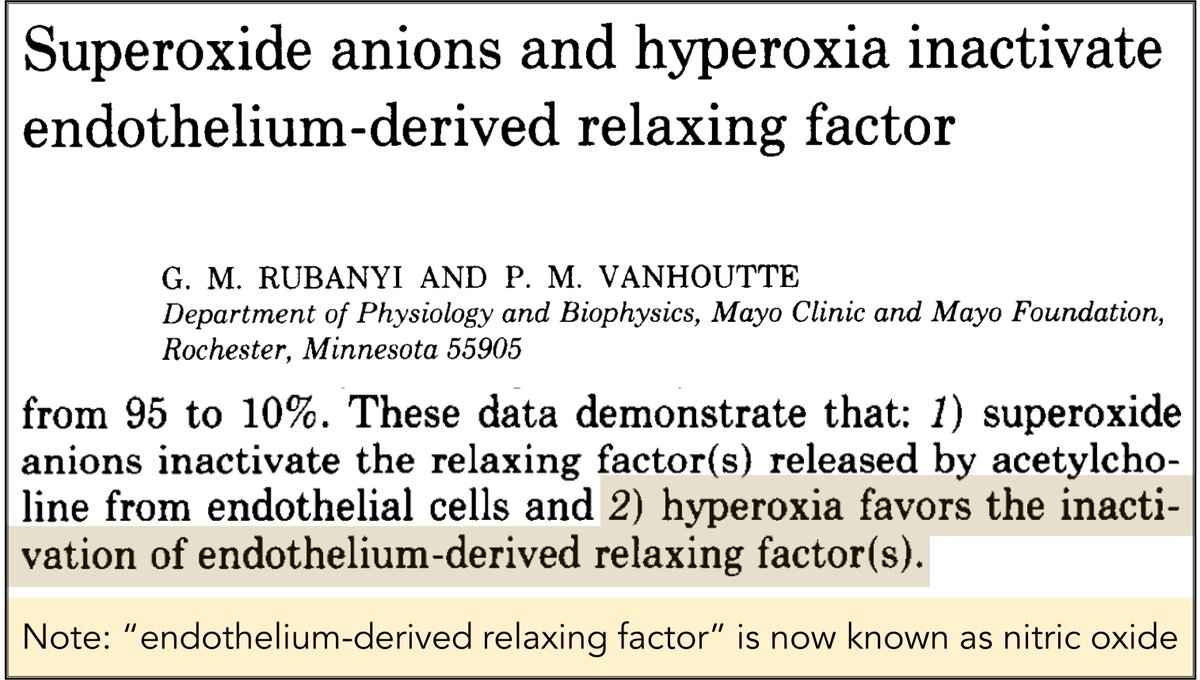
Notice that it isn't O₂ itself that's harmful.
Instead, it is the reactive oxygen species (e.g., superoxide, hydrogen peroxide) that cause harm.
In vascular SMCs, they lead to a reduction in NO.
ncbi.nlm.nih.gov/pubmed/3010744
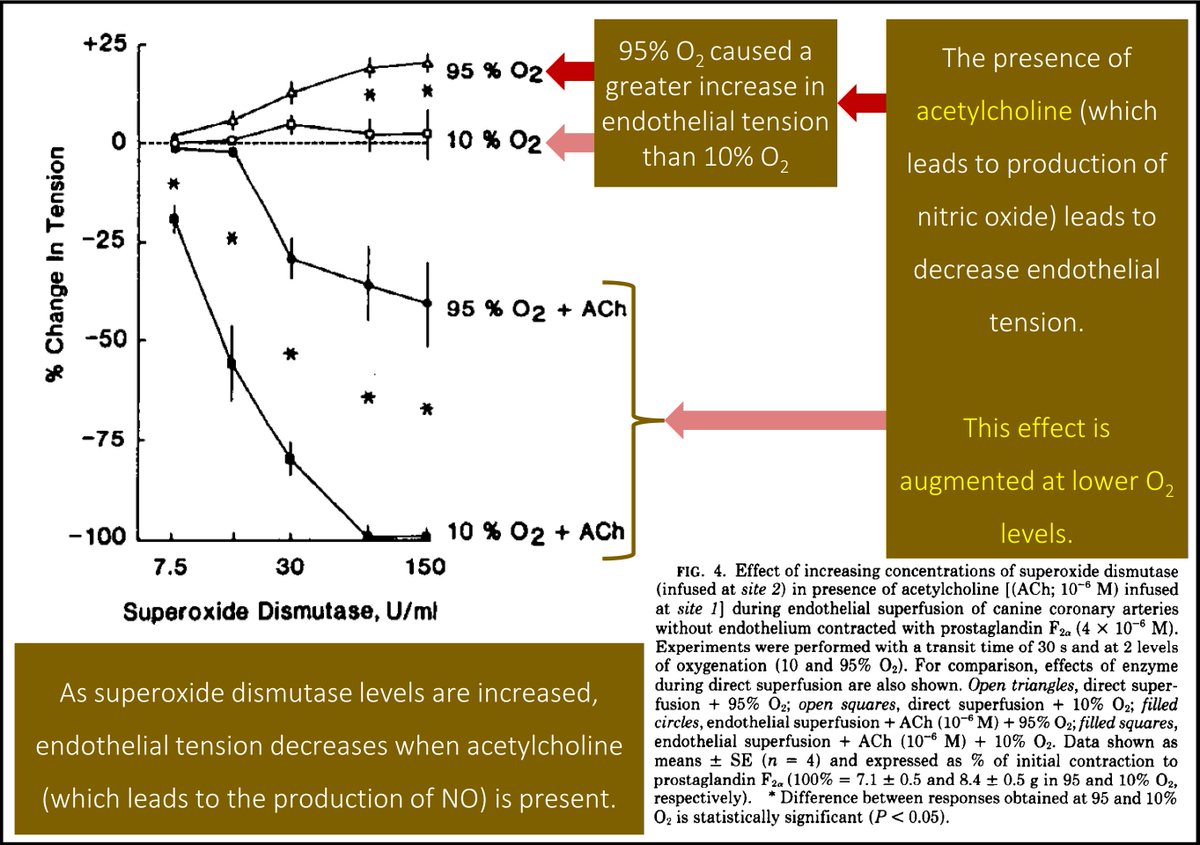
As I read about the vasoconstrictive effects of hyperoxia, I realized there was a paradox in need of explanation.
Why do pulmonary arteries vasoconstrict with HYPOxia while systemic arteries vasoconstrict with HYPERoxia?
What's explains the difference?
O₂ sensors are in vascular smooth muscle cells (SMCs). More specifically, mitochondria within vascular SMCs.
Research suggests that pulmonary and systemic arteries have distinct mitochondria.
Result: opposing responses to O₂
How cool is that!
ncbi.nlm.nih.gov/pubmed/12089069

Before closing, let's apply these mechanisms to see how they might affect treatment.
First, based on the mechanisms outlined above, which condition might benefit from hyperoxia?
Because hyperoxia leads to systemic vasoconstriction, one might imagine benefit in shock patients.
Unfortunately, while animals models of hemorrhagic shock support this hypothesis, data in humans suggest more harm than good.
ncbi.nlm.nih.gov/pubmed/17056674
ncbi.nlm.nih.gov/pubmed/27706466
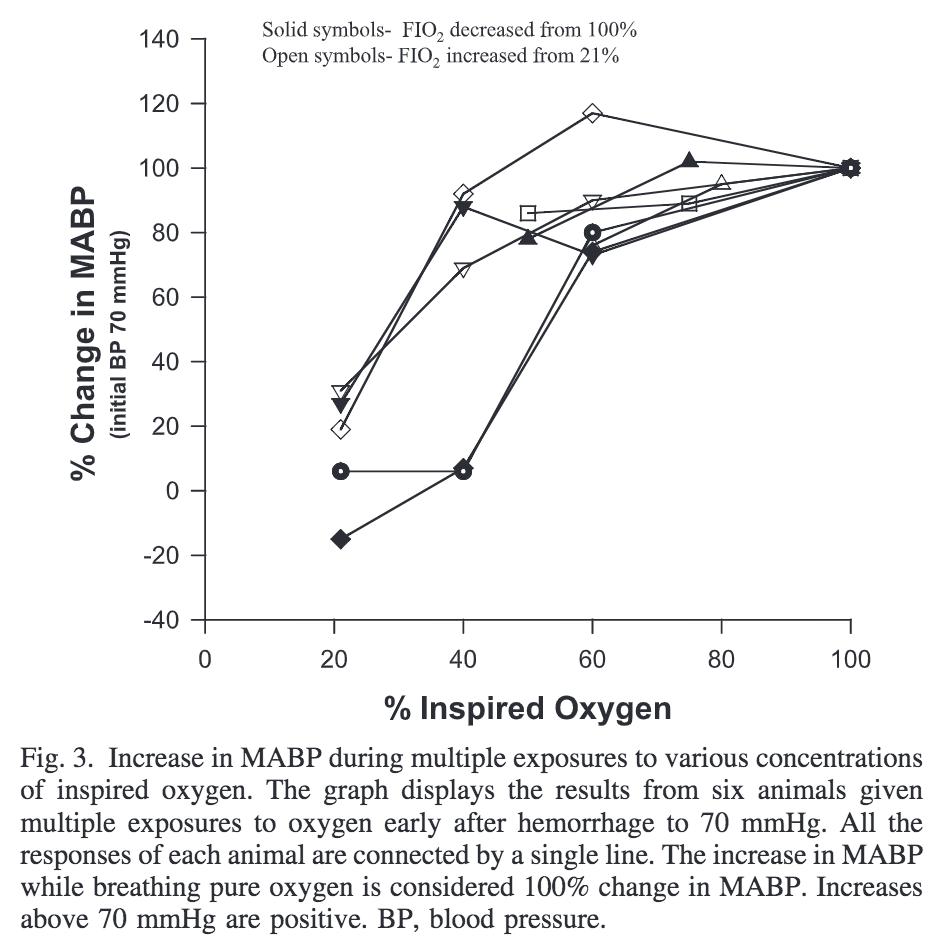
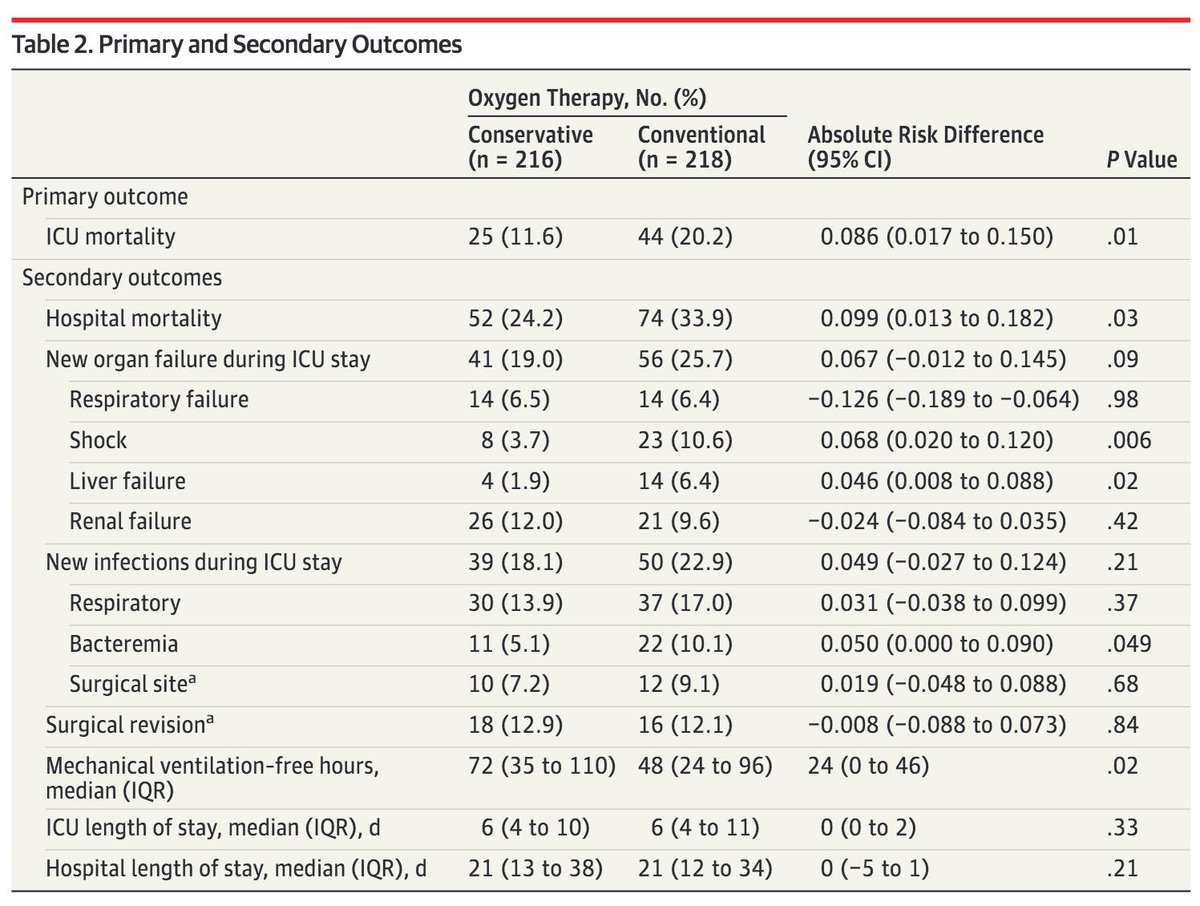
Second, what adjunct might mitigate the vasoconstrictive effects of hyperoxia?
When given to 12 adults undergoing elective coronary angiography, vitamin C (an antioxidant) restored coronary flow velocity that had been diminished by 100% O₂.
Despite this, I am unaware of any guidelines suggesting vitamin C for this indication.
ncbi.nlm.nih.gov/pubmed/17303710
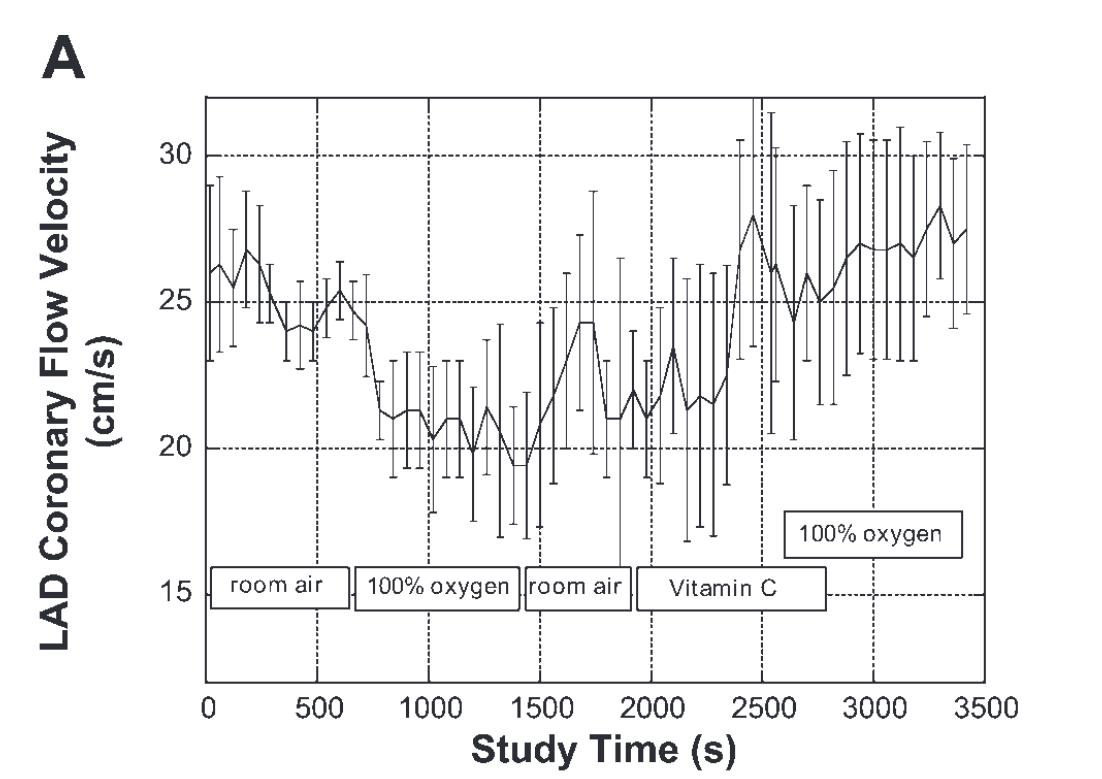
These two situations (hyperoxia for shock and vitamin C to improve blood flow) are examples where the mechanistic reasoning provides a rationale for study.
But, they also demonstrate that such an understanding does not predict what these studies will find.
💥Why is hyperoxia harmful?💥
➢ Increasing O₂ leads to systemic vasoconstriction via a reactive oxygen species mediated reduction in NO
➢ This may result in decreased perfusion of vital organs
➢ Pulmonary and systemic arteries have different mitochondria!
And here's a link to the articles I reviewed: docs.google.com/document/d/1yf…






